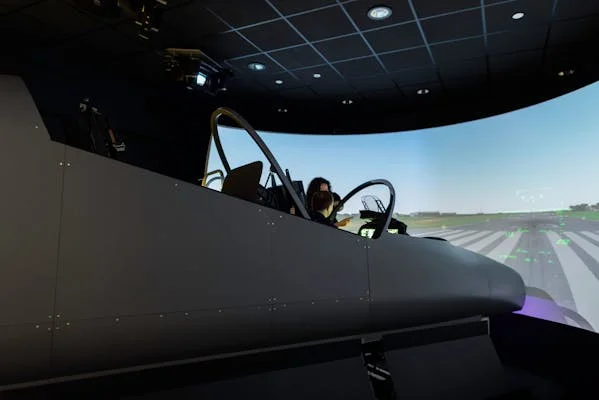When most people think of California, images of golden beaches, Hollywood, and world-class cities often come to mind. However, California is also known for its seismic activity, being located along the infamous San Andreas Fault. Earthquakes are an inevitable part of life in this state, which is why the california science center earthquake simulator offers a unique experience that educates visitors on this powerful natural phenomenon. Among its many exciting exhibits, the earthquake simulator stands out as one of the most thrilling and educational attractions. This article takes a closer look at the Earthquake Simulator, why it’s an essential feature at the California Science Center, and how it provides both fun and valuable lessons about earthquakes.
What is the Earthquake Simulator at the California Science Center?
The California Science Center earthquake simulator is an interactive exhibit that allows visitors to experience the shaking sensation of an earthquake firsthand. This high-tech simulator uses cutting-edge technology to recreate the motions of various types of earthquakes, from minor tremors to intense seismic activity. It’s a crucial tool for understanding the force and unpredictability of earthquakes, and it provides an immersive experience that educates visitors about earthquake preparedness, geology, and the history of seismic events in California.
The Science Behind the Earthquake Simulator
Earthquakes occur when the Earth’s tectonic plates shift, releasing energy that causes the ground to shake. The earthquake simulator at the California Science Center mimics this process, using a platform that can shake in various directions. The simulator’s movements are powered by a system of hydraulic actuators that precisely replicate the kinds of ground motions experienced during real earthquakes. Depending on the simulation, visitors might feel gentle swaying or intense shaking, which effectively demonstrates how different earthquakes can vary in their severity.
Why is the Earthquake Simulator Important?
California is no stranger to earthquakes, and the state has experienced some of the most devastating quakes in U.S. history. The California Science Center earthquake simulator serves as an important tool for both education and safety. It provides a hands-on way for visitors to understand how earthquakes occur, how buildings and structures are affected, and most importantly, how people can protect themselves during an earthquake.
Earthquake Education in California
The California Science Center is located in Los Angeles, a city situated on the edge of the San Andreas Fault. This region has experienced numerous earthquakes over the years, including the 1994 Northridge earthquake, which caused widespread damage and loss of life. By showcasing real-life data and information, the earthquake simulator helps people understand the risks and dangers posed by earthquakes in California.
Visitors to the simulator can gain insight into the science of earthquakes while learning about the ways in which engineers design buildings and infrastructure to withstand seismic activity. This knowledge is critical for both residents of California and tourists who may be unfamiliar with earthquake preparedness. The simulator serves as an entertaining and effective way to raise awareness about earthquake safety and preparedness.
How the Earthquake Simulator Works
The California Science Center earthquake simulator features multiple settings that replicate different magnitudes and types of earthquakes. Here’s how it works:
Step 1: The Setup
Before stepping into the simulator, visitors are given a brief explanation of the types of earthquakes they are about to experience. The setup includes a comfortable seat with safety harnesses to ensure that participants are securely strapped in. This is essential since the simulator can generate significant movements that could be disorienting without proper precautions.
Step 2: The Simulation
Once the participant is safely secured, the simulation begins. The platform starts to shake, and the intensity of the movements increases. The simulator can replicate different seismic waves, such as primary waves (which travel the fastest and cause the first shaking) and secondary waves (which are slower but can be more damaging). Visitors feel the tremors, vibrations, and shaking, providing a realistic sense of what it’s like to experience an earthquake.
Step 3: The Learning Experience
Throughout the simulation, informative screens and audio guides explain what’s happening in real-time. For example, if the simulator mimics a major earthquake, participants may hear about the devastation it caused in California’s history. They’ll also learn about building designs and the science behind earthquake-resistant structures. The experience not only informs visitors but also encourages them to think about how they can prepare for an earthquake in their own lives.
Benefits of the California Science Center Earthquake Simulator
The earthquake simulator is more than just a fun ride; it offers several educational benefits that help people understand and prepare for earthquakes. Here are some of the key advantages:
1. Realistic Earthquake Experience
The simulator offers one of the most realistic ways to experience an earthquake without being in a dangerous situation. By mimicking the movements and tremors of real earthquakes, the simulator gives participants an unforgettable and impactful experience.
2. Promotes Earthquake Preparedness
Experiencing an earthquake simulation can help visitors understand the importance of being prepared for real seismic events. They learn the key steps to take in the event of an earthquake, such as “Drop, Cover, and Hold On.” These practical lessons could potentially save lives in the event of a real earthquake.
3. Engages the Public in Seismic Education
The earthquake simulator is a powerful tool for engaging visitors of all ages. By combining interactive experiences with informative content, it attracts people who may not have previously thought much about earthquakes or their impact. It encourages greater awareness and public interest in geology, seismology, and earthquake preparedness.
Earthquake Preparedness: What You Can Do
While the California Science Center earthquake simulator provides a thrilling and educational experience, it’s important to remember that real-life earthquakes can be dangerous and unpredictable. Here are some key steps you can take to prepare for an earthquake:
1. Have an Emergency Plan
Before an earthquake strikes, it’s essential to have an emergency plan in place. Know where the nearest exits are in your home or workplace, and designate a meeting place outside. Make sure everyone in your household knows what to do during an earthquake.
2. Secure Your Home
Make sure heavy furniture and objects are secured to the wall to prevent them from falling during a quake. Keep essential items, such as first-aid kits and flashlights, in easily accessible locations.
3. Practice Drop, Cover, and Hold On
Regularly practicing the “Drop, Cover, and Hold On” drill is essential for preparedness. This simple but effective action can protect you from falling debris during an earthquake.
4. Stay Informed
Stay up to date with the latest earthquake warnings and safety information. There are several apps and services that can alert you to seismic activity in real-time.
Conclusion: Embrace the Power of Earthquakes
The California Science Center earthquake simulator is a unique, hands-on experience that brings the power of earthquakes to life. It’s an essential tool for educating the public about seismic activity, building safety, and earthquake preparedness. Whether you’re a resident of California or a tourist, this exhibit is a must-see. It offers an exciting, educational, and impactful experience that will leave you with a newfound respect for the forces of nature. So, will you be ready the next time the ground begins to shake?





